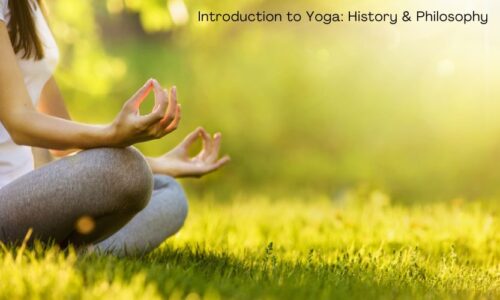Yoga is a rich, multidimensional tradition that evolved over thousands of years across the Indian subcontinent. This module explores the timeline of yoga’s historical development, from its mythical and proto-historical roots to its modern global presence. Drawing from archaeological evidence, classical scriptures, and contemporary scholarship, the module presents yoga as both a spiritual science and a cultural legacy.
Beginning with mythic transmissions from Adiyogi Shiva, early yogic elements can be observed in the Indus–Sarasvati civilization, where meditative postures and fertility symbolism suggest pre-classical contemplative practices. In the Vedic period, terms like yoga, tapas, and svadhyaya emerge, and early seers (Rishis) explore the inner dimensions of existence through ritual and hymn.
The Upanishadic era marks a major philosophical shift toward introspection, where concepts such as Atman, Brahman, and mind control begin to form the core of yogic inquiry. The Bhagavad Gita further synthesizes yoga as Karma, Jnana, and Bhakti, while Patanjali’s Yoga Sutras (c. 200 BCE) formally systematize Ashtanga Yoga into an eightfold path.
The post-classical period saw the rise of Tantra and Hatha Yoga, with deeper exploration of the subtle body, kundalini, chakras, and bandhas. The teachings of Gorakshanath and Matsyendranath, and texts like the Hatha Yoga Pradipika and Shiva Samhita, laid the foundation for integrated mind-body-spirit practice.
During the Bhakti and Vedantic renaissance, devotional mysticism merged with yogic insight, while colonial suppression led to the decline and marginalization of yogic institutions.
The modern revival began in the late 19th century with Swami Vivekananda, Paramahansa Yogananda, and Swami Kuvalayananda, who presented yoga as a universal spiritual and scientific discipline. The 20th century saw yoga globalize through T. Krishnamacharya and his students, influencing asana-based traditions and therapeutic adaptations.
In the 21st century, yoga is practiced globally in diverse forms—from traditional to commercial, therapeutic to spiritual. While challenges of commercialization and cultural dilution persist, there is a renewed interest in authentic sources, scriptural studies, and yoga therapy. Yoga today stands at a crossroads: honoring its deep philosophical roots while evolving to meet contemporary needs.
Curriculum
- 1 Section
- 11 Lessons
- 10 Weeks
- The Historical Evolution of YogaYoga is believed to have divine origins, with Lord Shiva as Adiyogi transmitting it to sages, forming a primordial lineage. Archaeological evidence from the Indus–Saraswati Civilization shows early yogic symbols and meditative postures. Modern research suggests continuity with Vedic culture, making yoga an indigenous, ancient spiritual tradition.11
- 1.1Chronological and Scriptural Foundation of yoga
- 1.2Pre-Vedic and Proto-Yogic Roots (Before 1500 BCE)
- 1.3Vedic Period (1500 BCE – 800 BCE)
- 1.4Upanishadic and Epic Period (800 BCE – 200 BCE)
- 1.5Classical Period – Patanjali and the Sutra Era (c. 200 BCE – 500 CE)
- 1.6Post-Classical / Tantra and Siddha Traditions (500 – 1300 CE)
- 1.7Bhakti and Vedantic Syntheses (1200 – 1800 CE)
- 1.8Colonial Era and Yoga’s Decline (1800 – 1900 CE)
- 1.9Modern Revival and Global Transmission (1893 – 1947)
- 1.10Post-Independence Expansion (1947 – 2000)
- 1.11Contemporary Yoga Landscape (2000 CE – Present)
Instructor

